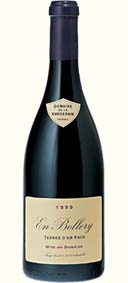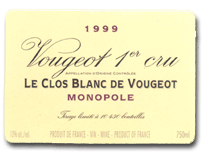|
|
|
|
Tasters Diary
There is no question that
Toronto, in terms of purchasing, is the wine and spirits capital of Canada.
Because of this, there are more cameo appearances by winemakers from around the
world bearing their wares in homage to the LCBO. Nevertheless, Montreal beats
out TO in terms of French visitations, while Vancouver is the sin qua non of unabashed dedicated genuine wine enthusiasts. Comparing Canada’s two
recent “premium” May wine events, for instance, our local Yorkville-based
Santé placed a very distant second to the awe-inspiring Vancouver Playhouse
Festival. It wasn’t simply the superior wines and seminars presented in
Vancouver – it was the sheer enthusiasm of the Vancouverites themselves.
Torontonians, by comparison, even the wine media it seems, have become so blasé that some winemakers become downright desolé when visiting hog town.
While
Marchand had previously worked at Domaine Comte Armand in Pommard, he is now
responsible for all 30 different wines produced at Vougeraie. Unlike Bordeaux
where vineyards are contiguous, Vougeraie’s numerous vineyard holdings are
small and spaced out in many communes. “The total holdings amount to 37
hectare” notes Marchand, “which is very significant for Burgundy where the
average is only five. Of course, each vineyard has its own microclimate meaning
that it’s a huge amount of work to monitor everything.” Ownership
is in the hands of the Boisset family who also control a number of major
concerns in France. In fact, last year Jean-Charles Boisset has formed a
partnership with Vincor, Canada’s largest wine producer, to establish a new
Niagara winery called Clos Jordan dedicated exclusively to Chardonnay and Pinot
Noir. It is
sad but true that the production of Burgundy is always small. On one site, for
instance, only 300 bottles of 2001 were produced. “Our largest production,”
Marchand notes, “is 20,000 bottles, which really is only 1,666 cases of
twelve!” Even more scarce, are
Burgundies that are worthy of the prices being charged. And that’s where
Marchand has had great success. At the Vintages “pre-arrival” tasting of
1999s last year, I wasn’t moved by most of what I tasted. The reason is that
the harvest levels on many of these wines were enormous, something that dilutes
flavour and structure. Vougeraie’s
almost across the board success is attributable to their “green harvest”
which entailed extensive pruning thereby reducing yields well before ripening
takes place. Marchand works hard to pick on the “flavour ripeness” of the
grapes. Not only are the grapes organically managed, but also there is usually
no fining or filtration. The latter is notorious for stripping the guts out of
Pinot Noir.
The real shock is that En
Bollery is not Pinot Noir, it is 100% Gamay Noir. And not any Gamay, but from
low yielding, densely planted (10,000 vines/ha.), 25-year-old vines planted
right in front of the world famous Chateau de Clos de Vougeot. It was originally
used to produce Bourgogne Passe-tout-grains, a relatively inexpensive blend of
at least two-thirds Gamay and Pinot Noir. Wine lovers should thank
Boisset for being brave enough to produce a 100% Gamay. Why? Because it must be
designated as a Bourgogne Grande
Ordinaire, which is usually cheap and not always cheerful. It’s ironic
that the name “Bourgogne”, which everyone associates with Pinot Noir, can
actually be made from Gamay as long as those grapes are grown in one of the ten
Beaujolais Cru (i.e. Morgon) farther south. It is for this reason that some
shippers like to put “Pinot Noir” on their labels. Ironically, Vougeraie’s
Terre d’en Face is significantly better, albeit somewhat different, than most
of the best Beaujolais you have tried. Low yields, fertile clay soils and an
absence of carbonic maceration have made this wine richer, fuller and more
flavourful. There is no question that extended maceration/fermentation of these
destemmed but uncrushed grapes in open top wood vats made a remarkable
difference. Few Gamays have a total maceration time of three weeks - 5 or 6 days
is the norm in Beaujolais. Oh yes, and the price -
only $19.95 (three bottle minimum) from Atlas
Wine Merchants at 1-888-702-8527. Of course, there are ten other selections
available. The wines sampled are showing very nicely now - their flavours so
much better and evolved than just a year ago. I am especially happy to discover
that they are still available.
In terms of taste and
structure, the 1999 Vougeot Premier Cru Les Cras at $73.65 was
the winner. The mature 40-year old vines combined with aging in tighter Allier
oak has given this red It is
at once very elegant and harmonious with refined wild red cherry fruit and hints
of chocolate on the palate.
|
||
|
Copyright Food & Beverage Testing Institute of Canada
2004 |

 So what wines presented
this week were worthy of the reader’s attention? Lights, camera, action! The
set is Far Niente Restaurant located in the heart of the moneyed section of Bay
Street. The spotlight is focused on winemaker and Régisseur du Domaine (or
state manager), Pascal Marchand who
hails from Montreal and has done yeoman’s work since taking over the Burgundy
based Domaine de la Vougeraie in 1999.
So what wines presented
this week were worthy of the reader’s attention? Lights, camera, action! The
set is Far Niente Restaurant located in the heart of the moneyed section of Bay
Street. The spotlight is focused on winemaker and Régisseur du Domaine (or
state manager), Pascal Marchand who
hails from Montreal and has done yeoman’s work since taking over the Burgundy
based Domaine de la Vougeraie in 1999. Getting
down to the wines presented, the first was the deep dark purple coloured
Getting
down to the wines presented, the first was the deep dark purple coloured  Of the three reds tasted,
two caught my fancy. The first was
Of the three reds tasted,
two caught my fancy. The first was  The last wine, the only
white tasted was a Vougeraie “Monopole” meaning exclusivity. The tiny
The last wine, the only
white tasted was a Vougeraie “Monopole” meaning exclusivity. The tiny